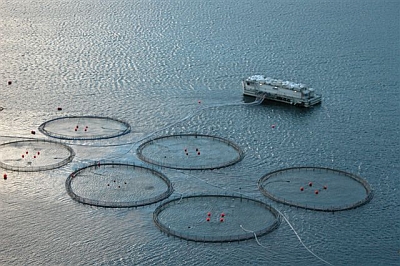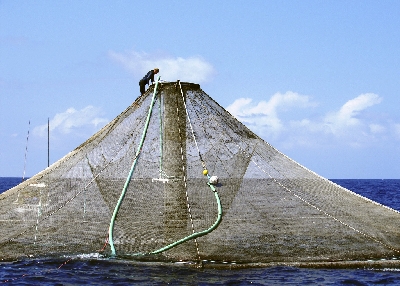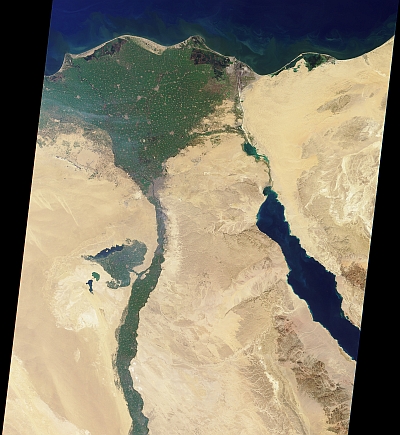4. Invasive Species in the Ocean
Transport of marine invasive species (2/3)
2. Aquaculture
Aquaculture is the equivalent of farming in the water. This can take place either under freshwater or sea water conditions. Aquatic species are cultivated under controlled conditions and raised for food, scientific or recreational purposes like angling or aquaristics. In the year 2005 nearly 19 mio. tonnes of fish, crustaceans, molluscs etc. have been produced in marine waters worldwide (FAO).

Photo: Erik Christensen
Many of the species cultivated in marine waters are not native to the area where they are held. In the case of unintentional releases they may become invasive or spread diseases among native organisms. One of the reasons for unintentional releases is for example holes in net pens.

Photo: NOAA
3. Canal construction
The Earth's present river systems have been created towards the end of the last ice age approximately 10,000 years ago.
The land masses between the rivers and the oceans act as natural barriers for aquatic species. However, these barriers have been
largely modified by the construction of canals enabling the exchange of aquatic species. The means of transport through a canal
are mainly through shipping. However, tidal flooding events may also transport marine species several kilometres inland.
The opening of the Suez Canal, for example, initiated a great influx of more than 300 Red Sea species into the Mediterranean Sea,
outcompeting and replacing several indigenous species (Wittenberg and Cock 2001).

Source: NASA/GSFC/JPL, MISR Team
